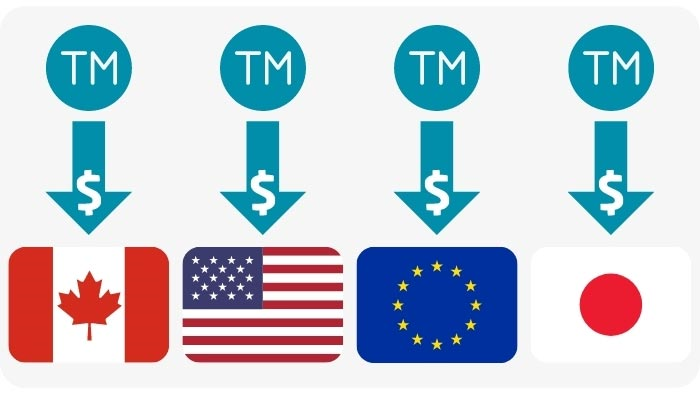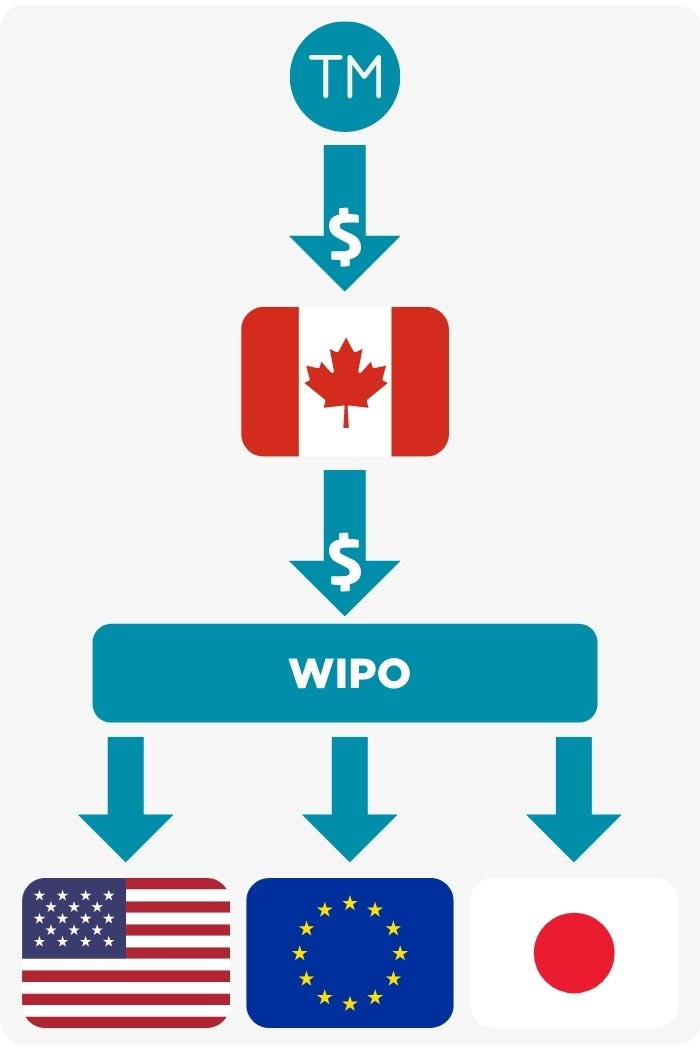Until 2019 most Canadian brand owners doing business abroad had limited options for protecting their trademarks outside Canada. They had to file separate applications in each country of interest, except in the few areas where a regional application was available (eg, the European Union).
This decentralised approach meant that securing global brand protection was a costly and sometimes difficult endeavour for Canadian businesses. Filing an application directly in a foreign jurisdiction typically requires the services of local trademark counsel in each country or region and often raises frustrating technical hurdles (eg, the need for translations, powers of attorney and formalities such as notarisation and legalisation of documents).
Traditional approach to filing trademarks internationally

Now there is a new option available to Canadian brands and businesses looking to expand and protect their trademarks beyond Canada's borders: international registration.
On 17 June 2019 Canada joined the international registration system (sometimes referred to as the Madrid Protocol, after the governing treaty). The system, which is administered by the World Intellectual Property Office (WIPO), enables brand owners to file a single application and pay one set of fees to apply for protection of a trademark in up to 106 member countries and regions (representing 122 countries in total). The system also allows brand owners to manage their global trademark portfolio by updating ownership and handling renewals through a centralised portal.
How to file applications for international trademark registration in Canada
To file an application for an international trademark registration, Canadian applicants must have an existing trademark application or registration with the Canadian Intellectual Property Office. Applicants can then file an application for an international registration with the WIPO based on the existing Canadian trademark rights and select the member countries and regions where brand protection is sought.
The WIPO examines the international application for formalities and, if in order, issues the international registration and sends it to the local trademark office for the countries and regions selected. Each office examines the application and decides whether to grant protection in its jurisdiction. The international registration represents a bundle of the granted rights in each country or region.
International registration process for filing trademarks

Benefits and risks of filing international registrations
Filing an application for an international registration avoids the need to retain local counsel to file separate applications in each foreign jurisdiction and eliminates the requirement for translations, powers of attorney and other formalities. Overall, the international registration application process is an attractive alternative to filing in foreign jurisdictions directly and can save brand owners considerable time, effort and expense.
However, there are certain legal limitations and financial drawbacks to the international registration system which make it unsuitable in all circumstances or for all trademarks and brands:
- The WIPO's fees for processing the international application are not insignificant and an application for international registration typically makes financial sense only when three or more foreign member countries or regions require brand protection.
- The international registration will be dependent on the fate of the underlying Canadian rights for five years. This means that if the Canadian application or registration lapses or is limited during the five-year dependency window, the international registration (and the grant of rights in each of the selected jurisdictions) will lapse or be limited accordingly. For example, if any aspect of the Canadian application is challenged by the Canadian Trademarks Office (in examination) or by a third party (in an opposition), the trademark could be rejected in whole or in part, thus threatening the international registration. If Canadian owners are concerned about whether their marks will successfully register in Canada, proceeding by way of international registration may prove particularly risky.
- The Canadian rights, the international registration and the associated rights held in the selected member countries or regions will all be owned by the same legal entity. Moreover, assignment of rights stemming from an international registration can be made only to an entity based in a country which is part of the international registration system. Accordingly, the system provides limited flexibility in portfolio diversification and management by geography or across multi-jurisdictional subsidiaries.
- Filing an application for an international registration does not eliminate the need to conduct clearance of the mark in all jurisdictions of interest. There is no substitute for local counsel in each jurisdiction to identify potentially conflicting marks, provide advice on inherent registrability and prepare the application in a manner which is likely to avoid potential pitfalls.
These risks can be mitigated by careful planning and consultation with legal counsel experienced in international brand protection and with a clear understanding of the brand owners' commercial goals and objectives in each market.
Overall, the option to pursue international registration is a positive development for Canadian brand owners with global trademark requirements and might well be a better alternative to the traditional approach of filing in foreign jurisdictions directly (particularly if the Canadian rights are already registered).
However, international registration is not ideal for every situation. Careful thought is required to develop a global trademark filing strategy which optimises budget and reduces risk, taking into consideration a brand owner's specific circumstances. Brand owners should therefore consult a Canadian trademark agent who can discuss those circumstances and create a tailored approach to global brand protection.





